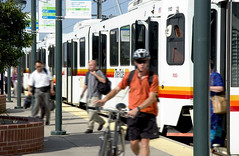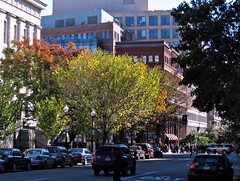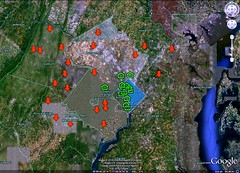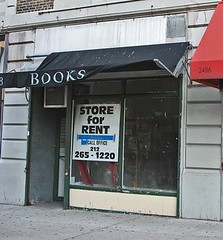Six sustainable communities stories to watch in 2011

Posted December 30, 2010 at 1:02PM
Here are some stories that I plan to watch in the coming year:
- What will become of the federal sustainability partnership? The HUD-DOT-EPA alliance for smart growth and sustainable communities has represented a significant step forward for the federal government in assisting states and localities in better placemaking. It took a while for the new partnership to bear tangible fruit, so to speak, but they delivered big-time in 2010, with substantial assistance to a wide range of innovative projects across the country. Under Secretary Shaun Donovan’s leadership (and that of HUD sustainability chief Shelley Poticha), HUD even promised to adapt location efficiency criteria from LEED-ND (and perhaps elsewhere) for discretionary housing grants. The problem for 2011, unfortunately, is that these kinds of projects, many delivered immediately prior to the 2010 election, require funding from a new House of Representatives that looks to be increasingly hostile to federal programs and spending.
- Whither transportation reform? In 2009, transportation reform advocacy coalesced into a coordinated movement, supported by millions of dollars of philanthropic funding.
 With the nation’s omnibus federal transportation law expiring, popular transit projects supported by stimulus legislation, the federal transportation trust fund dwindling and in need of a new concept, and Democrats theoretically in control of Congress, the stars seemed aligned for the biggest overhaul of federal infrastructure spending since ISTEA in 1991.
With the nation’s omnibus federal transportation law expiring, popular transit projects supported by stimulus legislation, the federal transportation trust fund dwindling and in need of a new concept, and Democrats theoretically in control of Congress, the stars seemed aligned for the biggest overhaul of federal infrastructure spending since ISTEA in 1991.
But the collapse of the Democratic Congress, along with public backlash against federal spending, have dealt a serious blow to the once-promising prospects for reform. Now reform-minded activists may be forced to fight merely to hold on to federal planning requirements, support for transit, and environmental programs as they exist, and to the extent reform is possible at all it may be viable only in a few regions via state and local law. How and where will reform succeed, if it does?
- High speed rail, dead or alive? The US is so far behind the rest of the developed world in the capability of our railway system that it’s embarrassing. There may be an exception in the Northeast, where the Acela Express whisks passengers between New York, Washington and Boston with amazing efficiency, reliability and comfort. I love the Acela and use it all the time. But why can’t I do the same from Atlanta to Raleigh, San Francisco to LA, Orlando to Tampa, or Chicago to Milwaukee and Madison?
One reason is that world-class rail systems require national subsidies, and a substantial part of political America hates the whole idea of subsidy (unless the subsidies are for natural resources extraction, such as clearcutting forests, of course, or fighting endless wars in distant lands). When the Obama administration took office, there was new hope for high speed rail, and some concepts even earned support from federal stimulus funds. But now we see the governor of Wisconsin actually giving money back to the treasury rather than use it to study rail improvements in his state. Will high speed rail's glimmer of hope prove to be merited, or was it a mirage?
- What will we learn from the 2010 census? Data from the latest decennial census began to emerge in late December 2010. Most of the initial publicity - at least in and around Washington - has focused on the relative growth of Sun Belt states, shifting more seats in the US House of Representatives to traditionally Republican states. There has been an analysis showing that median incomes of central-city residents have risen relative to their suburban counterparts.
 And we know that central-city Washington, DC (treated as a state in the census) grew five percent in the last ten years after decades of decline. (DC citizens’ representation in the House, however, will remain at zero, just as in the Senate.)
And we know that central-city Washington, DC (treated as a state in the census) grew five percent in the last ten years after decades of decline. (DC citizens’ representation in the House, however, will remain at zero, just as in the Senate.)
But the really interesting findings will emerge when the analysts have finer-grain data to explore, and time to do so: To what extent will (or won’t) the data confirm that the share of metropolitan growth claimed by outer suburbs is declining? That central cities are growing? That families with school-age children (the sweet spot of the market for single-family suburban homes) comprise a declining share of the population? That there have been shifts in the shares of commuting travel claimed by walking, driving alone, carpooling, transit, cycling, and so on? That there are different patterns in different locations or types of locations? All of the above and more will suggest corresponding changes in the built environment.
- Are outer ‘burbs really done? Apart from what we learn from the census, what will we learn from the market?
 Ever since gas prices began to go up and the housing bubble burst, we have seen outer suburban housing and commercial rents decline in value and suffer disproportionate numbers of foreclosures while those in central cities and inner suburbs have either held their values or suffered smaller losses. Now the economy is showing signs of recovery; will these trends continue, or dissipate?
Ever since gas prices began to go up and the housing bubble burst, we have seen outer suburban housing and commercial rents decline in value and suffer disproportionate numbers of foreclosures while those in central cities and inner suburbs have either held their values or suffered smaller losses. Now the economy is showing signs of recovery; will these trends continue, or dissipate? - Will cities be reshaped by changes in technology? Only dinosaurs like myself actually buy music CDs anymore and, when we do, chances are we order online; everyone else downloads. There’s hardly a bricks-and-mortar music store left, and bookstores are hanging by a thread. The buildings that used to house them are now empty, some looming ghost-like only a couple of blocks from my downtown office. Likewise movie theatres. My wife works for a large federal agency with an aggressive telecommuting program, and one result (counter to the market trends noted above) has been that employees no longer feel a need to live within commuting distance; it’s becoming common for them to move 50, 100 or even 200 miles away from work.
 NRDC’s own DC office is moving to a space that will be green and very nice but also relatively smaller on a per-person basis than what we enjoy now. Colleagues routinely call in to meetings rather than attend face-to-face.
NRDC’s own DC office is moving to a space that will be green and very nice but also relatively smaller on a per-person basis than what we enjoy now. Colleagues routinely call in to meetings rather than attend face-to-face.
When I read Richard Florida or Chris Leinberger I get encouraged again, but there’s part of me that wonders to what extent cities as we have known them will continue to have a reason to be. It certainly seems unlikely that cities will have all of the same reasons to exist that have supported them for centuries. Personal travel via automobiles eventually led to sprawl; what changes in land use will technology bring?
Finally, this one isn’t a story but a resolution on my part: I resolve never again to use the ridiculously overexposed and ambiguous word “vibrant” in this blog to describe neighborhoods, downtowns, or new developments. If I slip up, I’m counting on you to call me on it.
Move your cursor over the images for credit information.